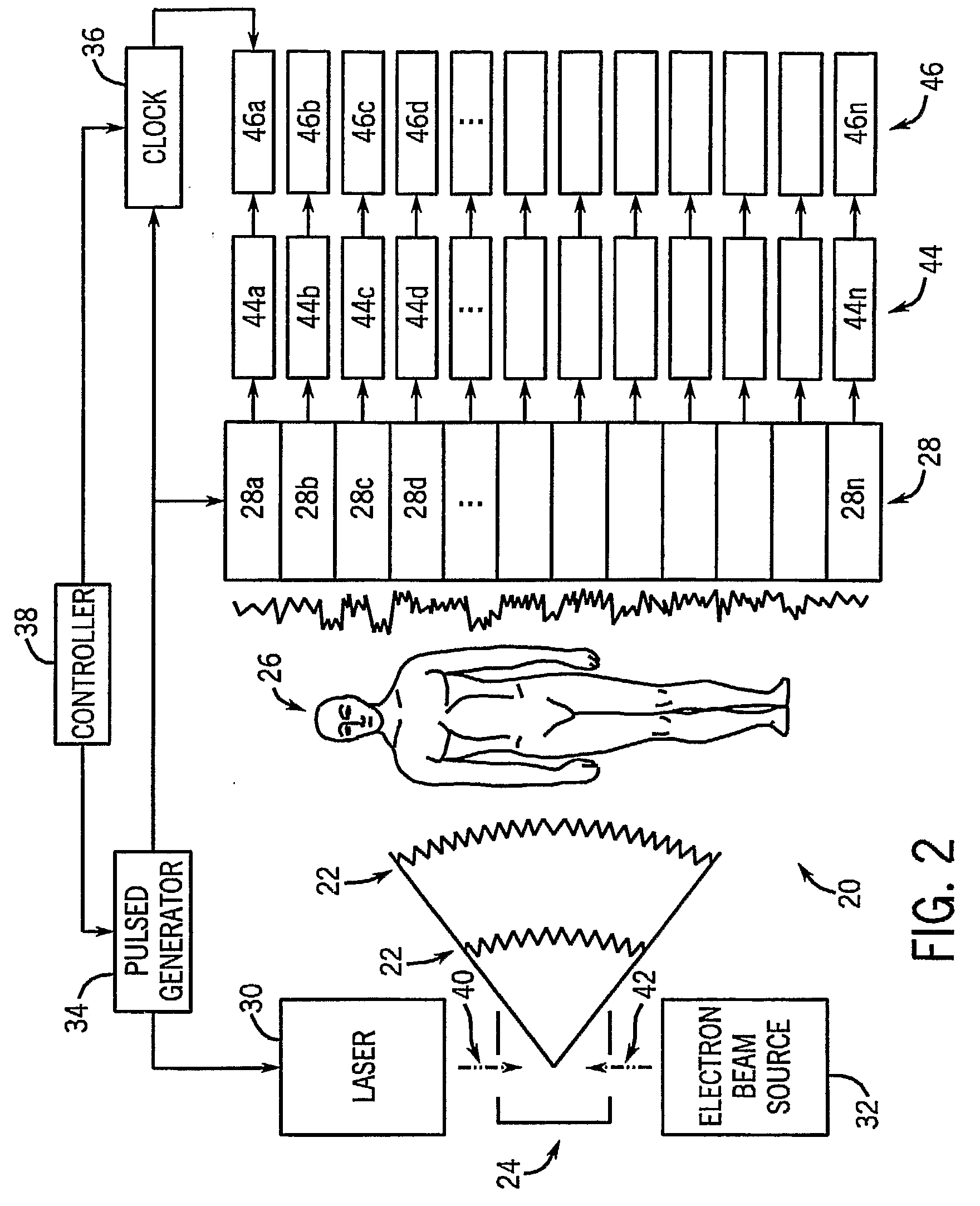System and method for time-of-flight imaging
- Summary
- Abstract
- Description
- Claims
- Application Information
AI Technical Summary
Benefits of technology
Problems solved by technology
Method used
Image
Examples
Embodiment Construction
[0033]It is contemplated that a variety of techniques may be employed to perform time-of-flight imaging (TOFI) to image large scale subjects, such as human patients. In particular, three systems usable with two detector systems will be described for clinically applicable imaging of the x-ray refractive index of tissues.
[0034]Referring to FIG. 2, in accordance with one aspect of the invention, one system 20 for performing TOFI is designed to generate a brief x-ray pulse 22 and measure the time of flight from a source 24, through a subject 26, and to a detector system 28. The high intensity x-ray pulse 22 can be generated by aiming a high power laser 30 directly at an oncoming electron beam source 32 to form the source 24. A pulse generator 34 is controlled in conjunction with a clock 36 by a controller 38 to cause the laser 30 to emit periodic pulses of laser light 40. The laser light 40 emitted by the laser 30 collides with and slows down the electrons of an electron beam 42 emitted...
PUM
 Login to View More
Login to View More Abstract
Description
Claims
Application Information
 Login to View More
Login to View More - R&D
- Intellectual Property
- Life Sciences
- Materials
- Tech Scout
- Unparalleled Data Quality
- Higher Quality Content
- 60% Fewer Hallucinations
Browse by: Latest US Patents, China's latest patents, Technical Efficacy Thesaurus, Application Domain, Technology Topic, Popular Technical Reports.
© 2025 PatSnap. All rights reserved.Legal|Privacy policy|Modern Slavery Act Transparency Statement|Sitemap|About US| Contact US: help@patsnap.com



